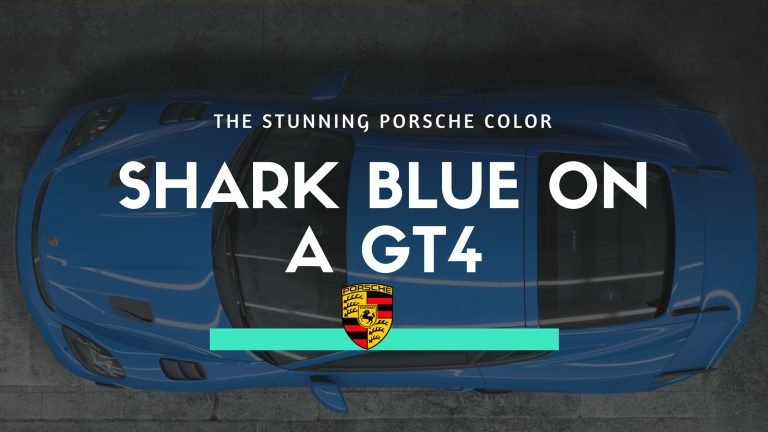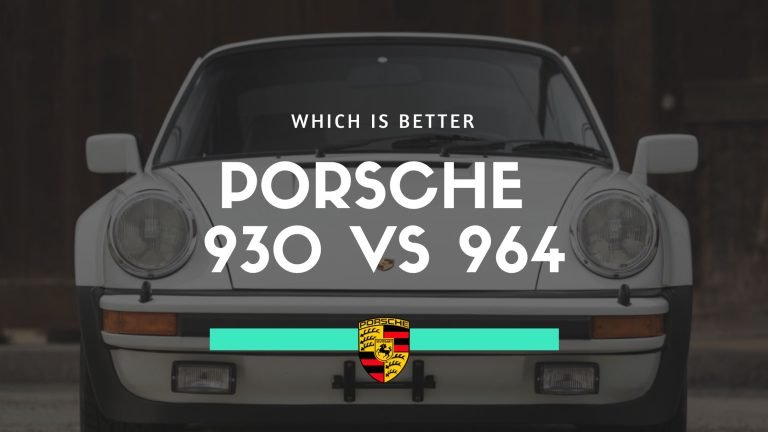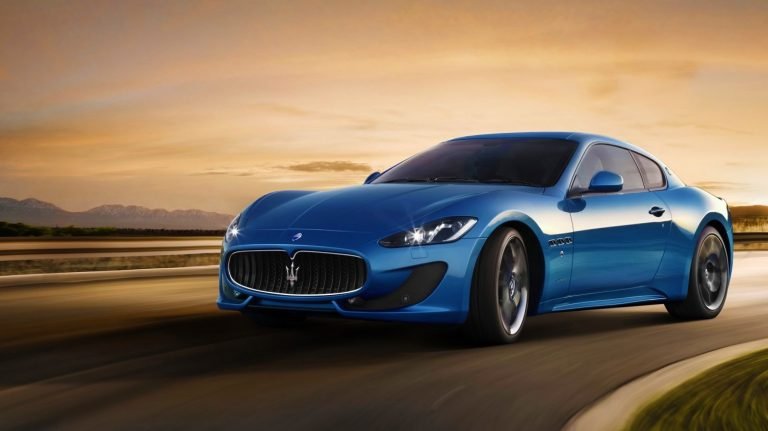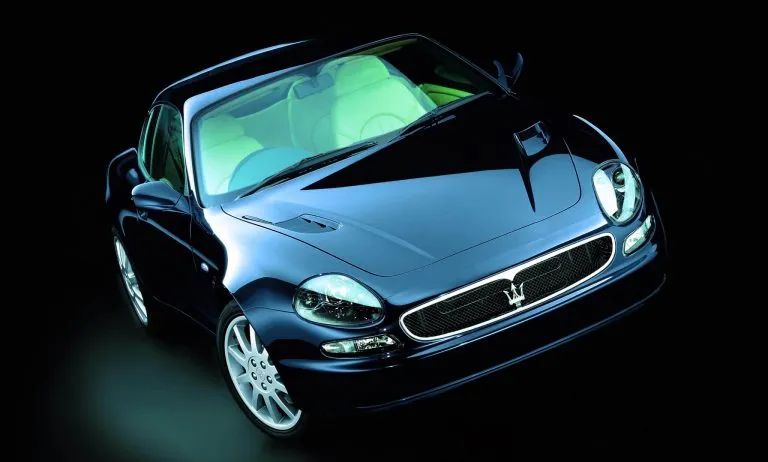2008 Maserati Quattroporte Review – Greater Heights
Maserati’s fortunes were going from strength to strength. Since 2002 they had been producing quality cars that were improving in performance and reliability every year. With the full backing of FIAT and Ferrari behind them, the technical specifications were jumping in leaps and bounds. While the styling and design had reached new levels with the return of Pininfarina, after an absence of more than 50 years.
To validate their successful position, Maserati would finally make a profit in 2007 – the first time since FIAT took up the reigns, in 1993. In that year, Maserati sold 7,350 automobiles from 272 dealerships in 59 countries spread over five continents. This would be a considerable jump of 33.3% since the previous year, compared to just a decade before when the sold just 500 units. Maserati’s Quattroporte V would now command over a third of the 100K+ luxury sedan market. Considering the big brands it was competing against, this was an excellent achievement for the “Little Factory from Modena”. The Maserati Trident had definitely reached greater heights.
Remake Remodel
The 2008 Maserati Quattroporte would match these aspirations. New editions would be added, a more powerful engine would be offered and an unpopular transmission would be quietly removed. The luxury sedan was offered in five different trims – the Base; Executive GT; S, Sport GT S and the, very limited, Collezione Cento.
This new exclusive edition was, as the name suggests, limited to a production line of just 100 models worldwide (though most would be headed for the oil-rich sheiks of the Middle East). It would set luxury to a new level as the price tag, of US$142,000, would suggest, coming in at 20% more expensive than the others.
Everything about it would be unique; starting from the ivory paint on the bodywork, accented by a waist coachline, Poltrona Frau Cuoio-color diamond-stitched tufted leather seats and upholstery while the wood finish has been rounded off with Wenge trim inlaid with mother of pearl. The rear of the cabin had been given an Infotainment overload. Facing each rear seat was a 10-inch touchscreen that can be connected to CD’s, DVD’s or the internet, via Bluetooth.
Power of the Prancing Horse
The 2008 Maserati Quattroporte Base would still be offering the 4.2-liter V8 Ferrari engine that would produce 395 bhp at 7,000 rpm and 339 lb-ft of torque at 4,250 rpm. This allowed it to make the 0-60 mph dash in 5.6 seconds and reach a top speed of 168 mph.
The newly introduced 2008 Quattroporte S would be given a bigger 4.7-liter V8 engine which had come out of the Maserati GranTurismo S. The extra power enabled it to make 424 bhp still at 7,000 rpm and 361 lb-ft of torque at 4,750 rpm and propelled it to make 0-60 mph in 5.4 seconds and hitting a top speed of 174 mph.
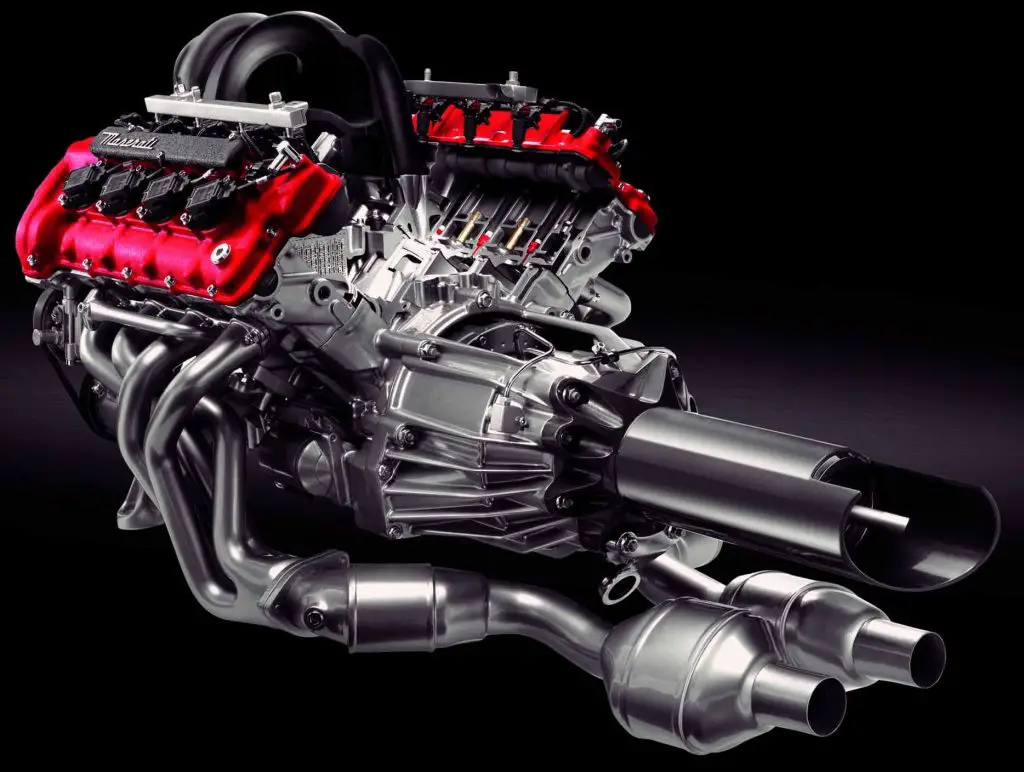
If that was not powerful enough, Maserati also produced the Quattroporte GT S. Using the same 4.7-liter V8 Ferrari engine, it would be tweaked to enhance the intake and sport exhaust system that would allow it to make 434 bhp. Acceleration was now at 5.1 seconds for the 0-60 mph sprint and the top speed was at 178 mph. Impressive speeds for a heavy 4,300+ lb sedan though the fuel economy suffers in urban driving (13 mpg).
The unmistakable V8 growl, that erupted from the quad tailpipes would be a scintillating thrill that ensured the Maserati was a standout from the field of other luxury sedans.
Fully Automatic
With the, jerky, automated manual gearbox finally being removed, the sole transmission option was the, tried and trusted, ZF gearbox that provided a six-speed automatic transmission. This could be applied in a couple of driving modes – Normal and Sport. Used as an urban cruiser, the transmission behaved smoothly as the sedan glided along sedately as befitting any luxury vehicle.
Enabling the ‘sport’ mode would quicken the shift changes and increase the revs between the upshifts. The GT S model would even make these gear changes 35% quicker still as it had a more aggressive setup.
But to really enjoy the thrill of the 2008 Maserati Quattroporte the driver needed to slide the gear stick across and begin controlling the transmission like a manual. Then, by flipping the stick up and down, or by using the shift paddles, situated just behind the steering wheel, the driver had total control of shift changes and could enjoy the total power and torque under their fingertips.
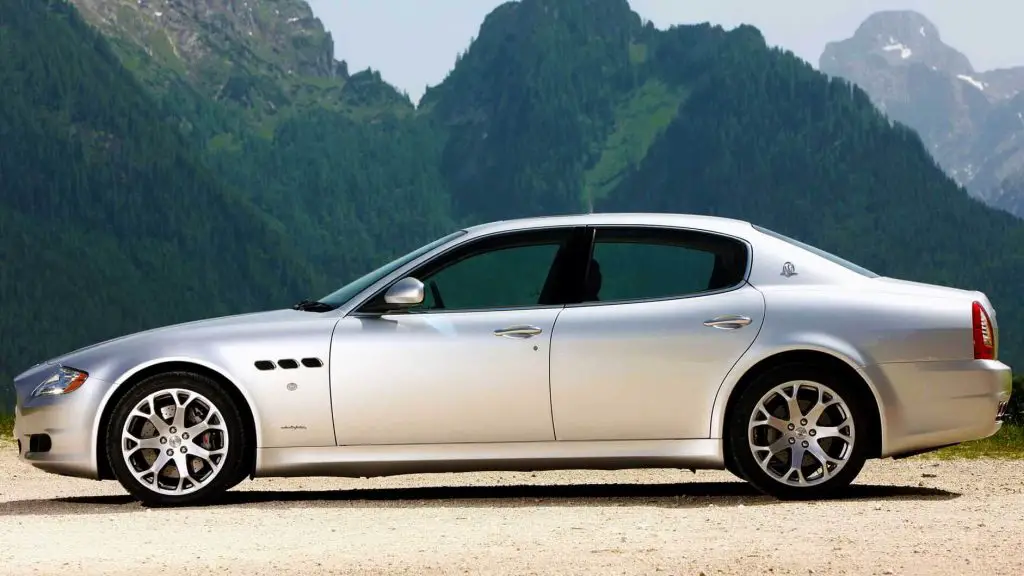
Precision Handling
The highlight of any Maserati motor is its fantastic driving ability and the 2008 Maserati Quattroporte was no different. Driven at speed on a thoroughfare or attacking corners and tight bends, the Quattroporte’s steering was always true and responsive. As if handling a car half its size, the big Maserati would hug the road as if riding on rails as it obeyed the commands of the driver without issues of over or understeer.
Even for less experienced drivers, they could enjoy the thrill of the Italian motoring heritage with confidence. A variety of driver aids were installed to ensure a smooth and safe ride. These included both stability and traction control as well as anti-lock brakes. These could take control of the braking or power in case the “excitement” got too out of hand.
Another key reason why the luxury sedan achieved great poise on the road was due to its perfect balance. Even with the automatic gearbox now installed at the front, beside the engine, the weight distribution ratio was still at 47/53 front to back. This ensued there would always be a lack of drift in the car,
Smooth Sailing
Whether the 2008 Maserati Quattroporte was gliding down the high street or attacking hairpins at breakneck speed, the ride was always as smooth as could be achieved. For the non-Sport designated models, the adaptive ‘Skyhook’ suspension system would ensure a comfortable journey at all times. It could intuitively adjust to road conditions and aggressive driving by individually adjusting each wheel accordingly to minimize body roll and lateral movement. When the transmission was enabled in the ‘Sport’ mode, the suspension would become firmer in anticipation of the more assertive driving.
For the S and GT S models, the ‘Skyhook’ was replaced by a single-rate damper system, installed by Bilstein. As these models were geared for a more “racier” approach. The height of the car had been lowered by 10mm and the rear tires were wider at 12 inches. More advanced Brembo brakes with six-piston red calipers would be fitted as well.
New Look
The 2008 Maserati Quattroporte would be given some aesthetic retouches. These would include the newer concave grille, with vertical metal slats, and new look front and rear lighting configurations as well as a redesigned fender and side sills. It would also inherit the wing mirrors from the GranTurismo while the S models saw more ‘edgier’ fit outs with accents of black trim adorning several exterior features.
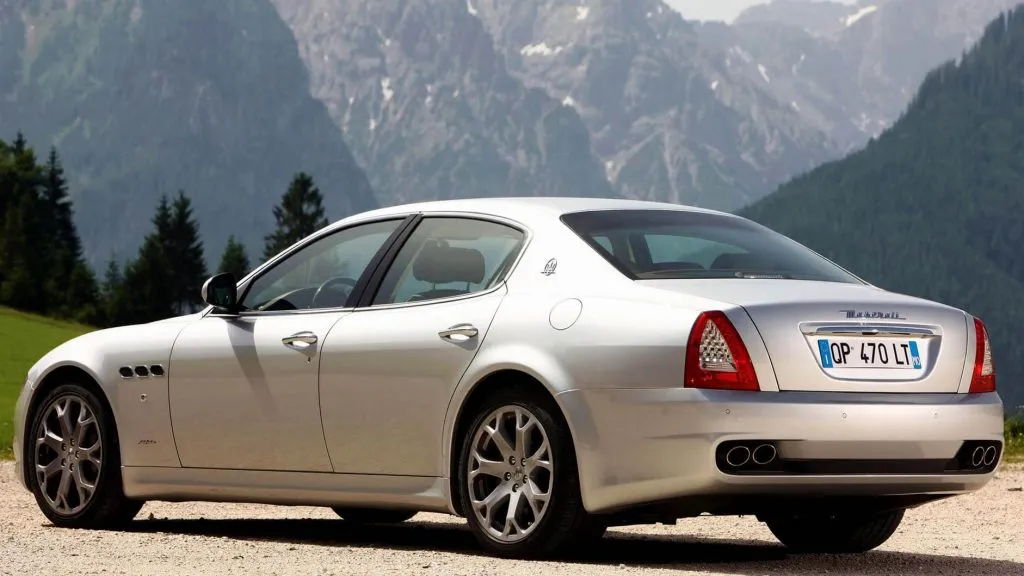
Unrivaled Luxury
Given the fact that the basic asking price for a 2008 Maserati Quattroporte would be $115,000, the level of luxury inside the car would be quite daunting. Poltrona Frau leather would cover almost all areas of the cabin and those not covered had superior finishes in metal or wood. The fine leather would adorn both the front and rear seats, the dash and central console, including the gear stick and door panels.
Other parts of the dash, central console and steering wheel would have a choice of titanium or three varieties of wood that included Mahogany, Rosewood and Briarwood (not including the Wenge wood for the limited edition).
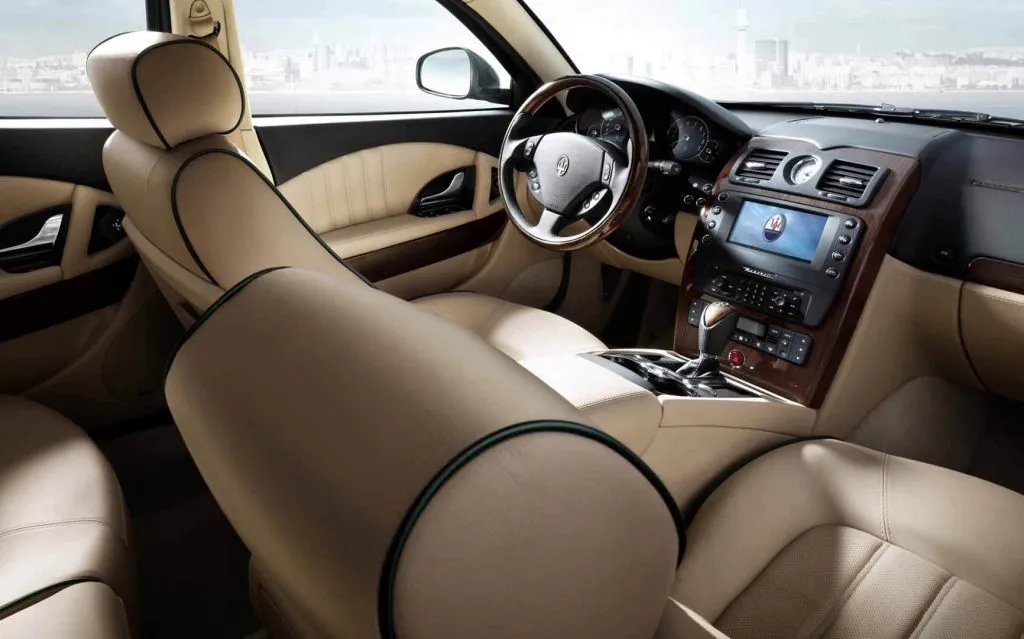
Maserati provided ten choices of skin tone to the leather as well as 13 different threads for the hand stitching and piping while, on the outside, the bodywork had 15 different paints to choose from as well as a selection of different sized alloy wheels (19 – 21 inches).
The Infotainment system comprised of a sat nav with a small touchscreen and a Bose audio system with a six-disc changer. But these did not match the rest of the interior’s quality, it has to be said.
A Choice of Trims
The two upgrades for the 2008 Maserati Quattroporte offered extensive luxury of a racier automobile. So, while the Executive GT focused more on interior upgrades, the Sport GT would enhance the performance for the most part.
The Executive model provided a wood-rimmed steering wheel, Alcantara roof lining, ventilated/adaptive/massaging rear seats, rear air-con controls, veneered retractable rear tables and rear shades over the window. The exterior was fitted with 19 inch eight-spoke alloy wheels and chrome-mesh front and side grilles.
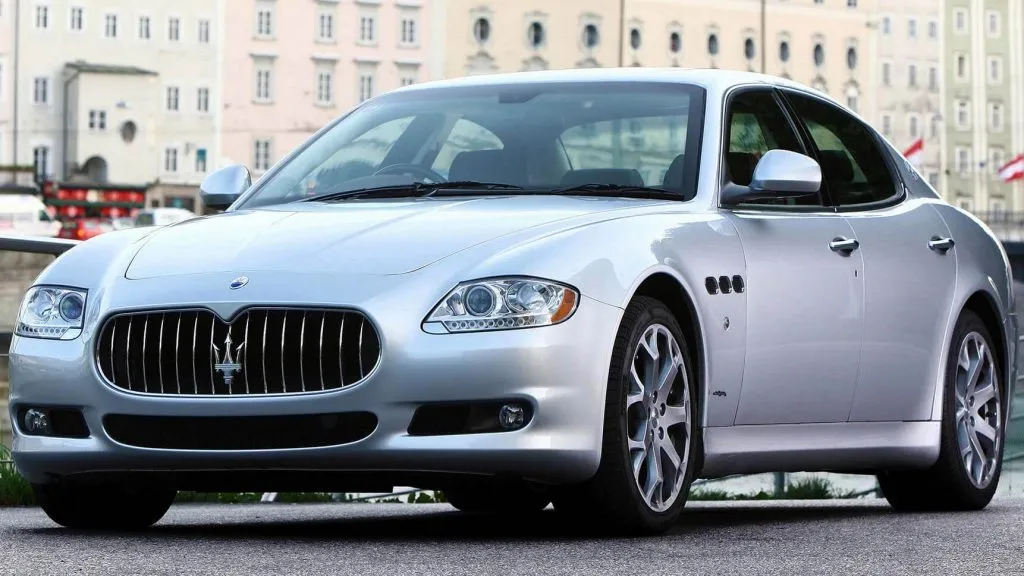
The Sport edition offered reconfigured transmission for faster shift changes and a firmer suspension, seven-spoke 20-inch wheels with low-profile tires that were 8.5 inches in the front and 12 inches in the back, improved brakes, dark-mesh for the front and side grilles and a red accented Maserati badge as a homage to their vintage racing models. Inside the cabin were aluminum pedals, sports steering wheel and the hard surfaces replaced with carbon fiber.
In only a few years, Maserati had become the market leader in luxury sedans. An automobile that was regarded as being as close to a four-door Ferrari as you could get. These were lofty heights indeed!


